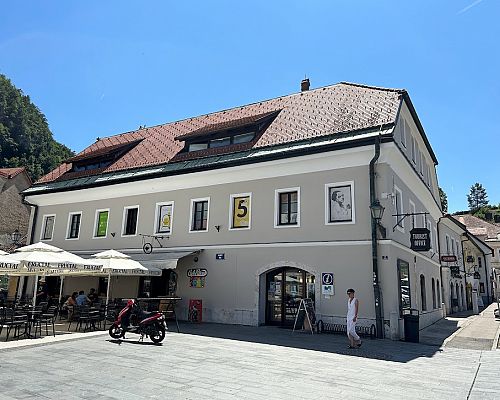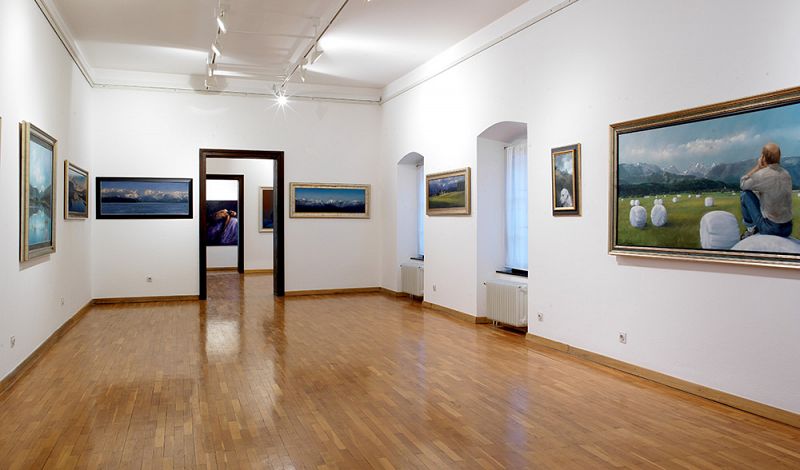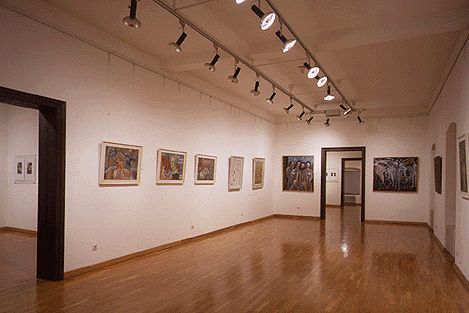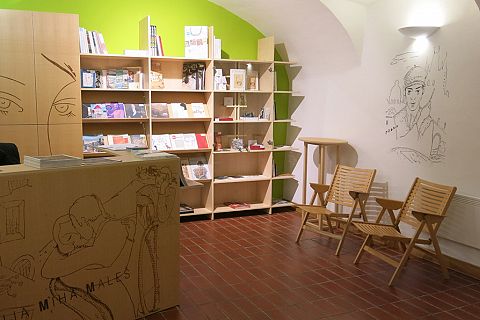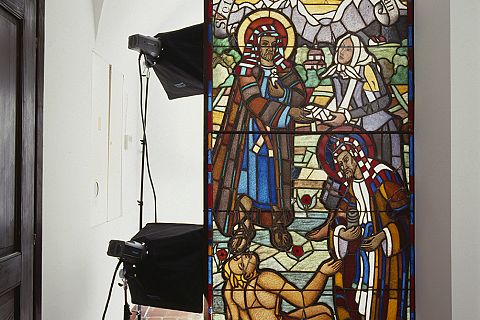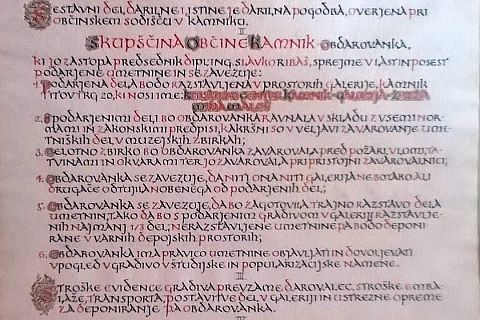- Info MM:K
Contact
Muzejska pot 3, 1241 Kamnik, Slovenia
+386 (0)1 8317 662
info@muzejkamnik.siDŠ: 92474519
MŠ: 5095417000
TRR: SI56 0110 0600 0057 156Opening hours MM:K
Opening hours for visitors:
Tuesday-Saturday: 10.00 – 18.00,
Sunday, Monday and holidays: closedMuseum – Zaprice Castle is from 15.4. until 15.9.2025 also open on Sundays from 10 a.m. to 2 p.m.
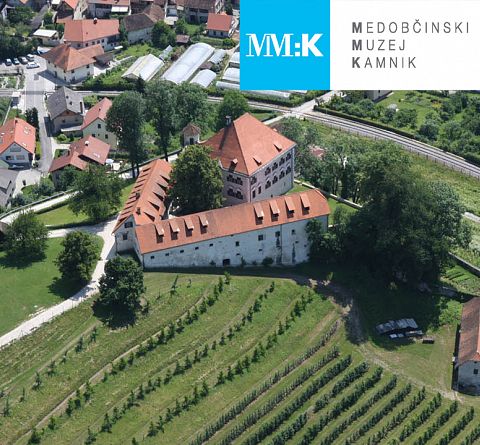
- Events & News
- Exhibitions
- Units
- Collections
- Education
- Shop
- About MM:K
History of Miha Maleš Gallery
The Miha Maleš Gallery was founded as an annexed unit of the Inter-municipal Museum Kamnik in 1979, when Miha Maleš donated 2634 works of art to Kamnik town as a gift upon the 750th anniversary of the first time Kamnik was mentioned as a town in written sources. For the purpose of presenting this donation, an old bourgeois house from the end of the 18th century was renovated at Glavni trg in Kamnik. Of course the renovation required the utmost effort, money and time, and the gallery opening was late by almost a year. In 1980 the first exhibition about the life and work of Miha Maleš was presented in the renewed gallery premises.
The gallery programme consists of permanent and periodical exhibitions that are specifically dictated by the art of the 20th century. They enhance awareness and introduce the life and work of Miha Maleš and his contemporaries, fellow artists and friends. The programme includes also exhibitions which systematically proceed with planned monographic researches of Kamnik and Kamnik-related artists that have yet to have their independent introduction, thus establishing a representative permanent collection which reflects the Kamnik history of art.
Since the foundation of the gallery, parallel to the exhibition activities, an idea for a documentary-educational centre of art and culture of the first half of the 20th century had developed, and Miha Maleš was its main representative. A real treasure has been created throughout the years of planned acquisition of Maleš’s personal documentation, correspondence, archive documentation, photos, educational material and technical library. In fact, there is no institution in Slovenia which, in cases of the presentation of significant artists of the 20th century, hasn’t searched for help or borrowed material and documentation from Miha Maleš Gallery.
Miha Maleš Gallery is a house of art, exhibiting the professional art of the 20th century, while at the same time it is an educational site with a rich technical library and documentation, and space for artistic workshops. With pedagogical and andragogical programmes and lectures, as well as public guidings, we tend to bring the art closer to visitors of all generations.



